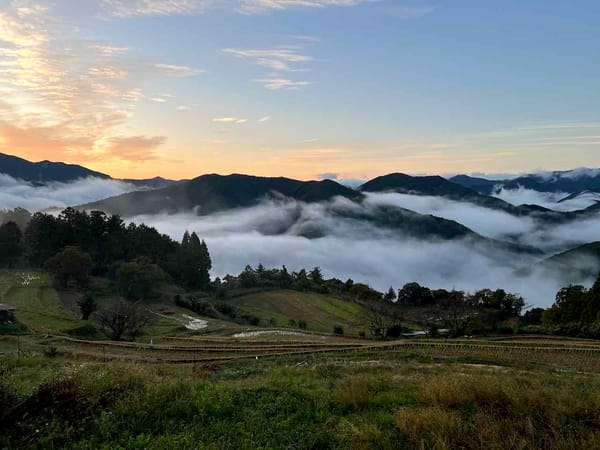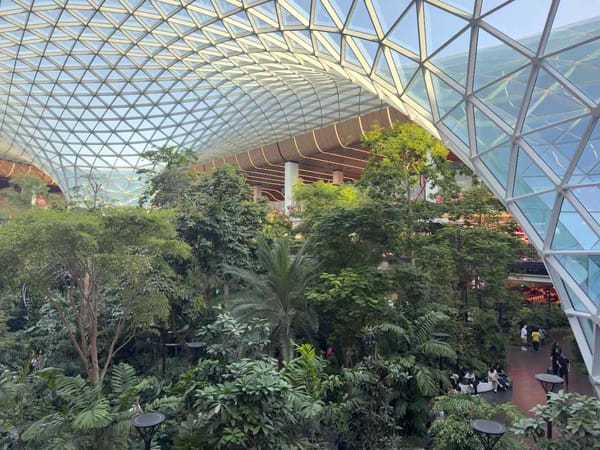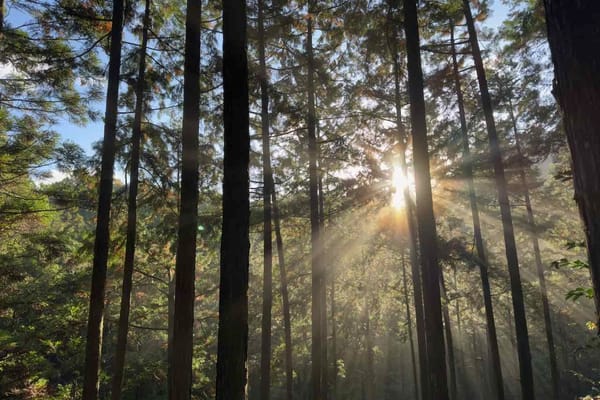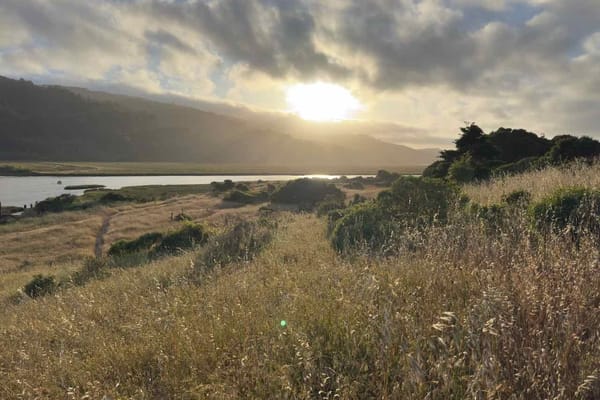The High Cost of Saying No: Why I Can't Stop Talking About Housing
Atlanta isn't just building structures. It is filling them with life. Meanwhile, in San Francisco, we keep fighting over everything except how to make room for each other. Cities, like lives, are made of choices. Say no long enough, and you run out of chances to say yes.
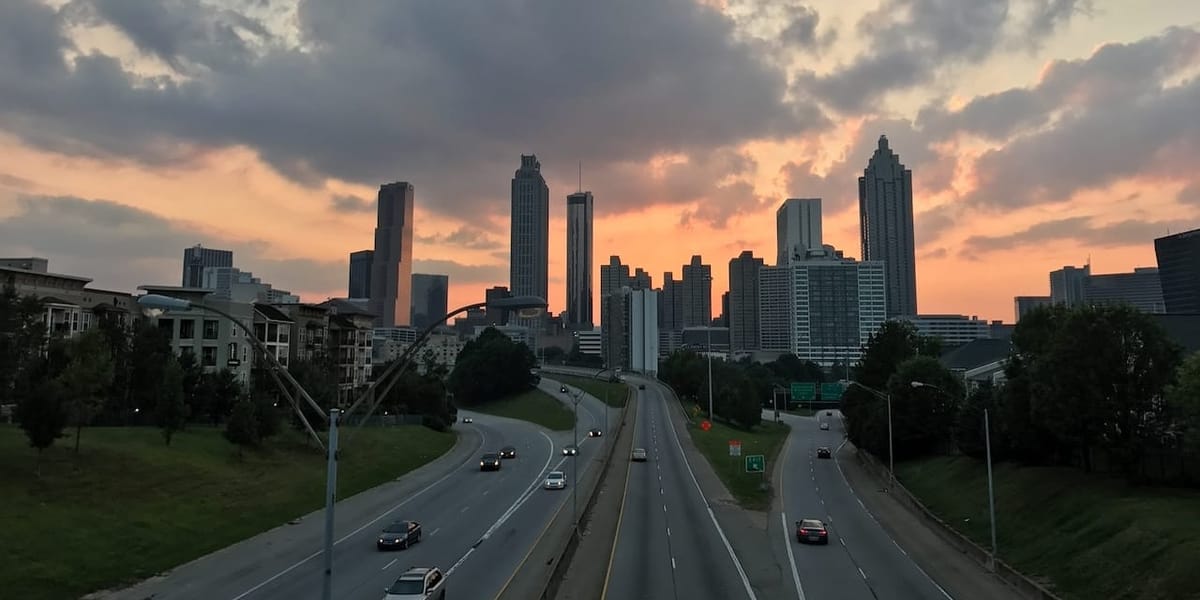
I didn’t come to housing policy through charts or white papers. I came to it the way millions of Americans do — by realizing, too late, that the place I lived was quietly making decisions I couldn’t undo. This is a story about how I became a YIMBY. It's also a story about Atlanta and San Francisco, about movement and stasis, about marriage, loss, and memory. And it’s about how housing stopped being an issue to debate — and became the architecture of my life.
I. Arrival in Atlanta
I wasn’t planning for Atlanta to change my life.
I rented a car at the airport and drove two hours east to the University of Georgia campus in Athens for a conference.
Atlanta was just the city I passed through — highways, sprawl, a skyline glimpsed in the distance as I merged onto I-85.
The conference ended. I should have driven straight back to the airport.
Instead, I stayed for a few days. My then best friend lived in Atlanta.
He picked me up and took me the long way through the Old Fourth Ward. Down Ponce de Leon Avenue, past the crumbling Clermont Lodge, the old Murder Kroger, and block after block of cracked asphalt and boarded-up shops.
We stopped for breakfast at Java Jive. It was a tiny diner tucked between abandoned parking lots.
I ordered the omelet and turkey sausage.
He laughed and said, “Now you’re doing it right.”
It wasn’t much.
But it felt alive.
And I didn’t stop there.
I went to the High Museum, wandering through cool, white galleries while the heat shimmered outside.
I walked through Piedmont Park, where the downtown skyline shimmered beyond the trees, the low hum of traffic brushing the edge of the grass.
I walked and walked — past murals bleeding color down the sides of abandoned walls, past small galleries tucked into old storefronts, past porches where ceiling fans spun lazily through the heavy air.
The smell of roasting coffee and frying onions tangled in the breeze.
Atlanta wasn’t just a place.
It was humming.
It wasn’t polished.
It wasn’t perfect.
But it felt alive in a way that San Francisco — even then — didn’t.
The second time I came to Atlanta, it was for good.
I had taken a university job in Atlanta.
But I didn’t move with my husband.
He stayed behind in San Francisco.
He was afraid of what it might mean to live in a red state — in an old Confederate state — as an immigrant, and as a gay man.
He didn’t want to be far from the protections that had made California feel safe since he immigrated to America.
So I commuted.
Back and forth, week after week.
Red-eyes on Sunday night, back in Atlanta in time for Monday morning meetings.
Home again by Friday, exhausted.
We told ourselves it was temporary.
That we’d figure it out.
That this was just what you did when cities pulled in different directions — and people still tried to make love stretch across them.
II. Atlanta’s Scars and Divisions.
But Atlanta wasn’t just luscious parks and ornate houses.
The more I explored, the more I saw the wounds the city carried.
The neighborhoods where I spent so much time, Downtown, Midtown, and Old Fourth Ward, had almost been erased a generation earlier.
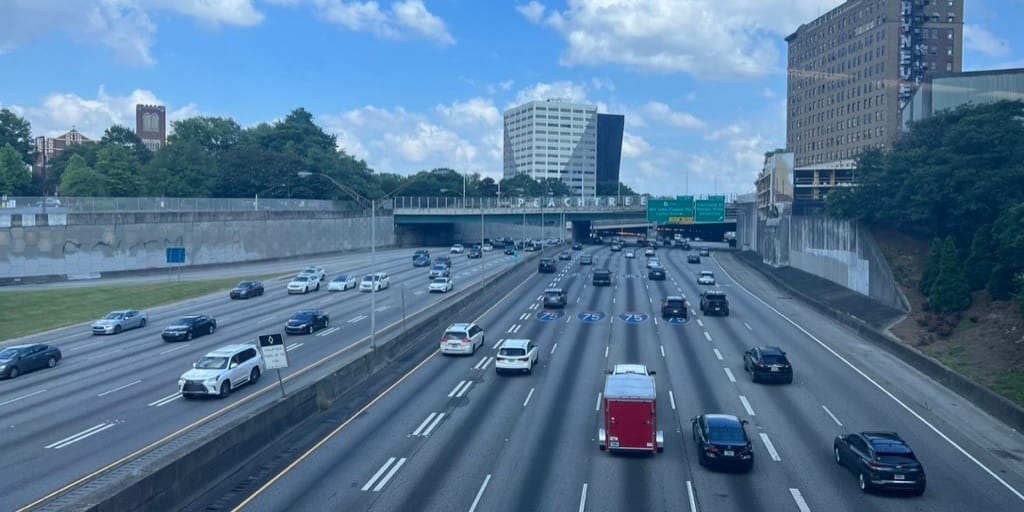
The Downtown Connector — over a dozen lanes wide — slashed through the city, splitting the West Side from Midtown. It cut off neighborhoods that were once stitched together by sidewalks and streetcars.
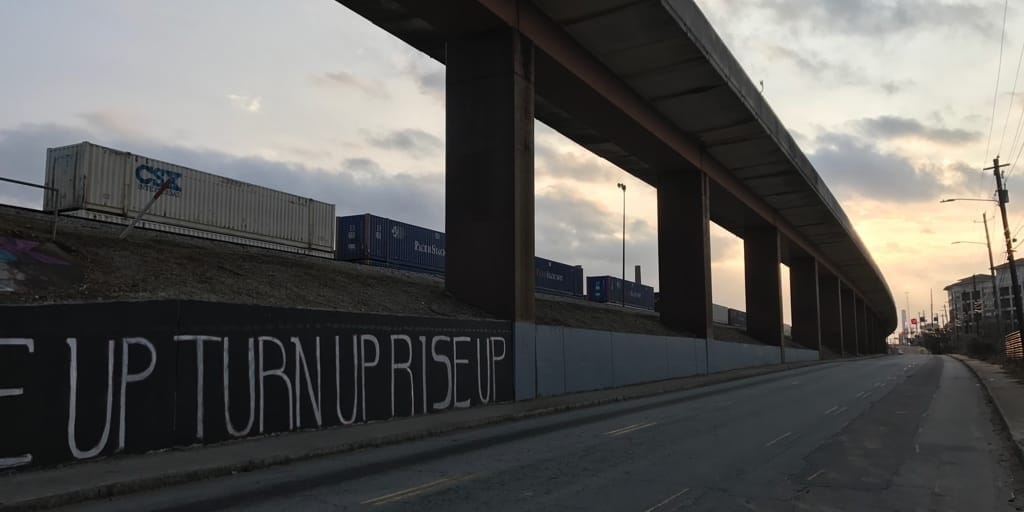
I-20 sliced east and west, carving a canyon that cut the city north from south, separating neighbors, schools, families.
Even today, you can feel the two halves of Atlanta turning their backs on each other across Ponce.
To ensure that Black and White Atlantans didn't live on the same street, street names change across Ponce.
Moreland became Briarcliff.
Courtland became Juniper.
Ira became Ralph David Abernathy.
Each name change was a quiet reminder — of boundaries drawn and redrawn, of who was expected to belong, and who was expected to move.
Ponce itself still ran ragged — gas stations, car washes, empty lots pressing up against new construction.
A street that remembered what had been taken — and what had never been given back.
Atlanta wasn’t a city that had always been thriving.
It was a city trying to stitch itself back together.
And somehow, despite all the loss, there was still hope.
III. Atlanta’s Attempt to Heal
Right at the center of all of this historical tension, of this pattern of destruction and reconstruction, on the border between Black Atlanta and white Atlanta, stood the old Sears building.
Two million square feet of concrete and brick.
Connected by rail lines that once fed goods directly into its loading docks.
Built exactly where it was — not by accident — so that Black and white Atlantans could both shop there.
In a city that divided everything — schools, parks, neighborhoods — Sears was different.
It was enormous. Proud. Alive.
And then it was abandoned.
After Sears left, the building sat mostly empty for decades.
The only real reason to visit was to pay parking tickets at City Hall East — buried inside a building that had once been the beating heart of Atlanta’s commerce.
By the time I arrived, something had already begun to shift.
Before I ever set foot in Atlanta, the city had already made a daring bet.
They put in real money — $250 million — to transform it.
They partnered with the city. They tied parking revenues to fund trails and infrastructure.
They treated the building not as a relic, but as a seed.
At the same time, the city threw its weight behind an even crazier idea:
The BeltLine.
A young city planner dreamed up a loop of parks and trails stitched from old rail corridors.
The city created a tax district to capture rising property values, using future growth to fund present motion.
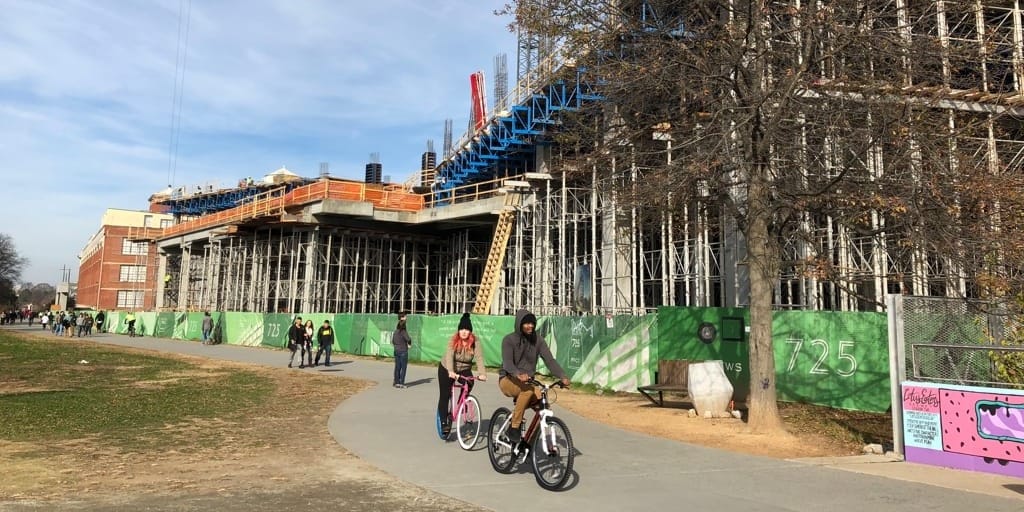
Back then, the idea of spending hundreds of millions on old rail corridors and crumbling neighborhoods seemed insane.
No one was sure the BeltLine would work.
No one was sure anyone would come.

It wasn’t inevitable.
It wasn’t easy.
It took risk. It took imagination. It took faith.
They weren’t just renovating a building.
They were trying to stitch a city back together — sidewalks, parks, neighborhoods — in a place that had been carved apart by concrete and fear.
Ponce City Market wasn’t about nostalgia.
It was about motion.
It was about saying: even the places we broke could still be places where people belonged.
IV. The Bet That Paid Off and the Bet That Never Happened
By the time I arrived in Atlanta, the bet on Ponce City Market had already started to pay off.
The building was alive again — but the full transformation around it hadn’t yet finished.
The neighborhoods still felt raw.
Some blocks thriving.
Some blocks barely hanging on.
But the direction was clear: Atlanta had chosen to move forward.
Meanwhile, San Francisco was facing its own chances to change and letting them slip away.
The 1989 earthquake cracked open the city’s foundations: the Central Freeway, the Embarcadero.
The Transbay Terminal project offered a chance to rethink the Financial District.
And then came the tech boom — the biggest accumulation of private wealth in the last twenty years anywhere in America.
Billions flowed into the city.
And very little changed.
We preserved the skyline.
We preserved the zoning maps.
We froze.
As a city, we said no.
And somewhere in the middle of all that, the tension started to creep into my own life.
I wanted to participate in Atlanta’s growth.
I wanted a home with a yard for my dogs.
I wanted a porch.
I wanted a guest room where family could stay.
But my husband wanted something else.
He wanted — no, he needed — safety.
He reminded me, late at night after the arguments had cooled, that no matter how big a porch you bought, it wouldn’t stop the police from calling you a faggot.
That a guest bedroom wouldn’t stop someone from demanding to see his immigration papers on the street.
We’d argue — sometimes late into the night, sometimes so quietly it hurt to speak.
Because we were both right.
And we were both trapped.
I remember sitting across from him at the kitchen table, both of us too tired to keep fighting, both of us too afraid to stop.
We weren’t just arguing about where to live.
We were arguing about who would get to belong — and at what cost.
After the fights cooled, after the silences stretched longer, I started seeing it everywhere — not just in our apartment, but all around me.
It wasn’t just us.
The whole city was stuck in the same argument.
About who belonged.
About who should be allowed to stay.
About whether growth was a threat — or a promise.
In California, those arguments eventually coalesced into a political movement: Yes In My Backyard — YIMBY.
A desperate attempt to start saying yes again.
To say yes to homes, yes to newcomers, yes to futures that didn’t have to look like the past.
In Atlanta, the city didn’t wait for a movement.
It kept moving forward.
Every time I came back, the city was almost unrecognizable.
One month, there was just a gravel trail past Krog Street on the BeltLine, crunching underfoot.
Then suddenly cranes appeared — building new offices, new condos, new apartments.
The trail stretched farther and farther, pulling the city along with it.
You could hear the steady rhythm of footsteps and bike wheels on the BeltLine, the low thrum of conversation spilling from outdoor coffee shops.
The hiss of new water features softened the traffic hum.
The concrete still held the day’s heat, even after sunset.

The empty lot behind the post office on Ralph McGill?
New towers now.
Surface parking lots around Ponce City Market?
Gone — filled in with housing and offices.

Murder Kroger was torn down — replaced by a gleaming new building.
The Clermont Lodge, once crumbling, became a boutique hotel.
The BeltLine finally connected to Piedmont Park.
Memorial Drive, once scattered with lonely new buildings, now thrummed with dozens of them — coffee shops, restaurants, storefronts tucked under bright awnings.
Acoustic guitars tangled with the hiss of espresso machines from open patios.
Children’s laughter skipped across the BeltLine, cutting through the hum of traffic and construction.
Atlanta wasn’t just building structures.
It was filling them with life.
Meanwhile, in San Francisco, we kept fighting.
We fought over everything.
We fought over building heights that might cast a shadow on a park for an hour a day.
We fought over turning an empty Nordstrom parking lot into homes.
We fought over whether new housing would have too many windows, or not enough parking, or too much shade on the wrong tree.
We fought over everything except how to make room for each other.
Housing costs spiraled faster than my career could catch up.
I left academia for a better-paying job —
only to watch the cost of living outrun me faster still.
My husband and I argued more and more.
It almost tore us apart.
San Francisco stopped feeling like a city.
It started feeling like a museum.
Boarded-up shops. Empty storefronts.
A place for looking, not living.
Meanwhile, Atlanta — every time I went back — kept breaking ground.
More housing. More trails. More life.
V. The Cost of Waiting
Somewhere in the middle of all that — the fights, the late nights, the growing sense that San Francisco was slipping away from us — my husband finally said the words I had been waiting for.
He told me he hated seeing me so upset.
He told me we could look at moving.
That maybe it was time to start over somewhere else.
That maybe we could finally say yes to a different kind of life.
Biden, Ossoff, and Warnock had won in Georgia, after all.
A week later, he died unexpectedly.
Just like that.
No warning.
No second chance.
Now I live in a house that feels too small without him in it.
A house we could barely afford, in a city that no longer feels like it belongs to anyone.
The thing I didn’t understand, back when we were arguing about porches and police, was that we weren’t just fighting about where to live.
We were fighting about how much time we thought we had.
Like San Francisco, we always thought there would always be more time.
Time to figure it out.
Time to fix it.
Time to start over.
But cities, like lives, are made of choices.
Say no long enough, and eventually you run out of chances to say yes.
Cities think they have time, the same way people do.
They don’t.


